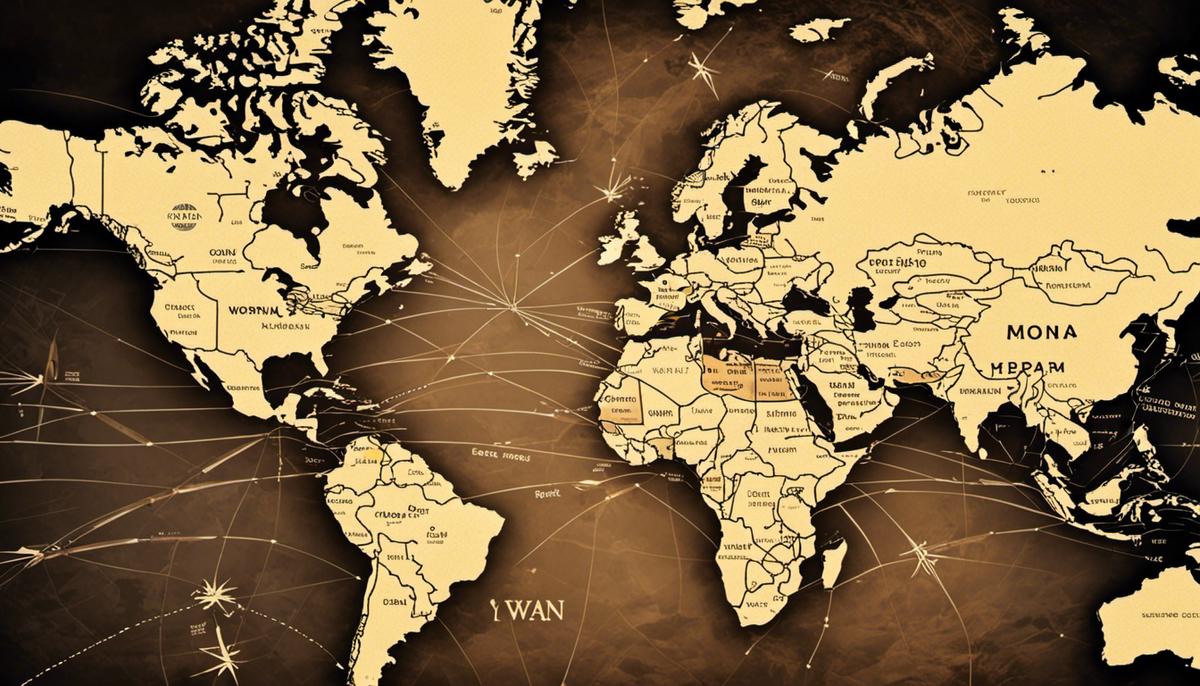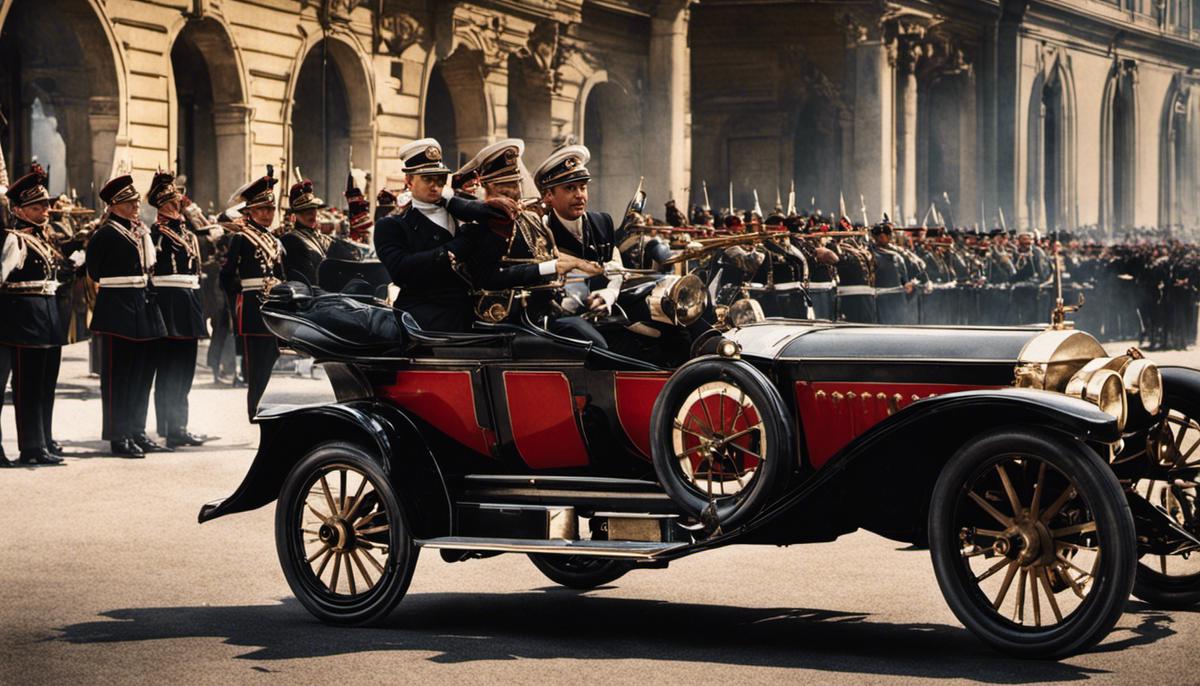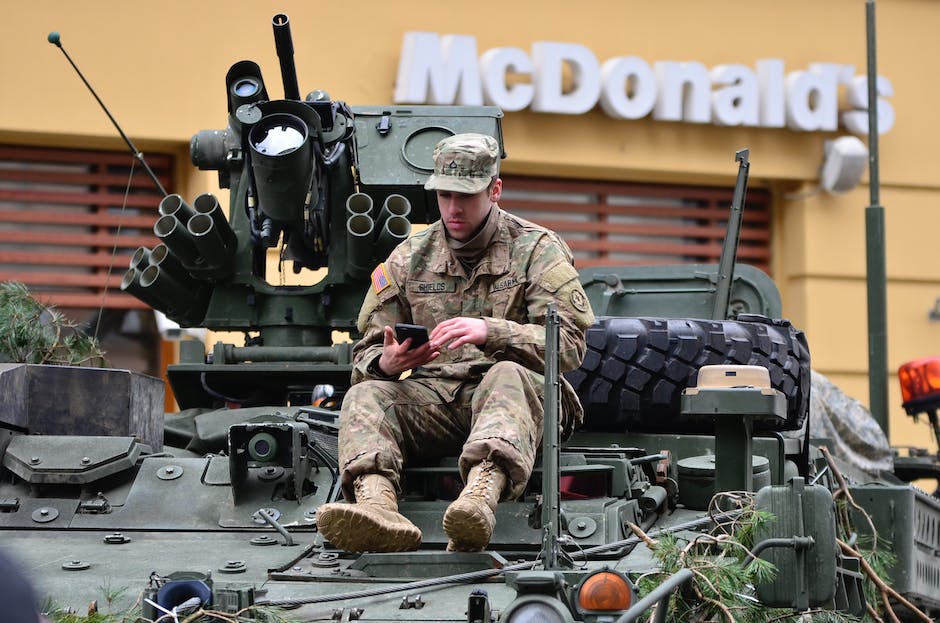In the annals of human history, few events have been as transformative or as devastating as World War I. A cataclysm that claimed the lives of millions and shattered empires, it forever altered the geopolitical landscape. Rooted in a complex web of nationalistic fervor, imperial rivalries, economic tensions, militaristic arms races, and diplomatic failures, the genesis of this monumental conflict is an intricate, convoluted tapestry. In a world defined by uneasy alliances and the insatiable scramble for colonies, the assassination of Archduke Franz Ferdinand merely provided the spark for the powder keg that had been years in the making. The following discourse aims to illuminate the authentic causes, direct and indirect, of this epochal conflagration.
Table of Contents
The Global Political Landscape Pre-WWI
The Hidden Political Currents: Underlying Factors that Predisposed World War I
As observers of history and purveyors of an intricate web of interactions, it is our duty to explore and unravel the complex factors that culminate in world-altering events. One such monumental happening, World War I, a cataclysmic conflagration that shook the world from 1914-1918, has a rich tapestry of underlying political factors that paved the path towards this devastating conflict.
To comprehend the political elements that set the stage for World War I, it is essential to delve into the delicate equilibrium of European power maintained by alliances. The early 20th century bore witness to a Europe divided into two main defensive collaborations: the Triple Entente – comprising the United Kingdom, France, and Russia – and the Central Powers – constituted by Germany, Austria-Hungary, and Italy. These alliances, born out of geopolitical interests, were not merely treaties of peace; they fostered an intricate web of obligations, making the continent a ticking time bomb.
On the other hand, the apprehensions hinged on the rapid rise of Germany under the steadfast leadership of Kaiser Wilhelm II must not be overlooked. The surge of Germany both economically and militarily engendered a sense of unease among other nations. This coupled with Germany’s ambition to assert itself as a ‘World Power,’ aggravated the already brewing international tensions. An enthralling aspect of this narrative was the so-called ‘Dreadnought race,’ wherein the naval rivalry between Germany and Britain escalated tensions, stirring the pot of rivalries further.
Also, worth mentioning is the catalytic role of nationalism. While nationalism generally bores the fruit of unity, its shadow side often foments bias and hostility against ‘the other.’ During this period, Serbia’s nationalistic aspirations threatened Austro-Hungarian stability, escalating tensions. The assassination of Archduke Franz Ferdinand of Austria by a Serbian nationalist in June 1914 starkly illuminates the role of nationalism within the unfolding drama.
A discerning eye ought to also acknowledge the “Eastern Question” – the political and economic instability of the declining Ottoman Empire fostered a power vacuum. European powers, eyeing strategic advantages, were embroiled in diplomatic scuffles to assert dominance over the demising Empire. This added another layer to the web of European politics.
Lastly, the colonial legacy of European powers ran deep in the subconscious of the world order during this time. An almost hysterical race toward colonization and imperial consolidation played heavily into rivalries between the imperial powers. The conflicting interests in Africa added fuel to the simmering fire.
The analysis of these political factors reveals how the pan-European alliances, rise of Germany, nationalism, the ‘Eastern Question,’ and militaristic race for colonization collectively forged an environment conducive to World War I. By understanding these fragmented layers, one gains an appreciation for the intricate mosaic of political interactions that spiraled uncontrollably into one of the world’s deadliest wars. History is not a mere chronicle of events, but a multi-dimensional narrative of intertwined actions, actors, and motives that present an opportunity for learning, reflection, and progression.

The assassination of Archduke Franz Ferdinand
We venture further into unraveling the inciting cause for World War I, pulling into focus the assassination of Archduke Franz Ferdinand. It’s an event steeped in tragedy, scandal, and a rush of political undercurrents – all of which contribute to painting a larger tableau of European history. Some history buffs and pundits brush this incident aside as a mere spark in an already volatile mix. Yet, a more detailed analysis, tempered by the lens of academia, reveals that it indeed functioned as a trigger of epic proportions.
On June 28, 1914, Archduke Franz Ferdinand, heir to the Austro-Hungarian throne, was assassinated in Sarajevo by Gavrilo Princip, a Serbian nationalist. It’s interesting to note that the trajectory of that fateful bullet was much more than just a physical act of violence. It was, so to speak, a concentrated discharge of the longstanding power struggle between Austria-Hungary and Serbia. The death of the Archduke was no mere isolated event, but a direct confrontation between Serbian nationalism and Austro-Hungarian sovereignty.
This brings to the forefront Serbia’s contentious relationship with Austria-Hungary and its ambitions to unite South Slavic nations under one yoke, often referred to as Pan-Slavism. This nationalism was fostered by Serbian officials and endured despite Austria-Hungary’s attempts at marginalizing Serbian influence. The assassination event thus circumstantially led to the intensification of already-existent nationalist sentiments, something that served to starkly delineate the conflicting interests of Serbia and Austria-Hungary.
Following Franz Ferdinand’s assassination, a series of communication events deemed the “July Crisis” transpired. The Austro-Hungarian government, eager to curtail Serbia’s growing influence, presented an almost un-meetable ultimatum, fostering a situation of enhanced tension. When Serbia’s response failed to satisfy Austria-Hungary’s excessive demands, the latter declared war, marking the beginning of World War I.
It’s worth mentioning that the murder itself, while indicative of larger ideological conflicts, would not have led to a world war in the absence of a complex web of alliances and power dynamics. Germany’s explicit support for Austria-Hungary, known as the “blank check,” in the aftermath of the Archduke’s assassination played a crucial role in escalating the conflict. Russia, France, and Britain, the members of the Triple Entente, were then drawn into the conflict due to their chain of alliance commitments.
Simultaneously, the major powers, driven by an escalating arms race, jockeyed for control and influence, providing the volatile backdrop against which the Franz Ferdinand murder occurred. The transformative power dynamics among influential Europe, combined with the raw feeling of nationalism, set the stage for the assassination to act as a catalyst for war.
Thus, while it can be argued that the assassination of Franz Ferdinand did not singlehandedly precipitate World War I, it undeniably functioned as the match lighting an already gas-filled room. The political upheaval, the expression of nationalist ideologies, the alliances, and power imbalances – all these threads braided the rope of tension that the assassination gripped and pulled.

The Role of Militarism and Nationalism
The horrific assassination of Archduke Franz Ferdinand of Austria catalyzed the outbreak of World War I. The act, executed by Gavrilo Princip, a Bosnian Serb nationalist, at Sarajevo on June 28, 1914, was far more than a simple murder. This event served not only to disrupt the already fragile peace maintained by alliances but also to stoke the fires of entwined nationalism and militarism waiting to erupt.
Historically, Europe was no stranger to power struggles and armed conflicts, but the intricate networks of alliances and treaties had allowed for a delicate equilibrium, which was drastically upset by the Archduke’s assassination. This assassination was more than a stimulus; it personified the highly charged atmosphere of nationalistic fervor intermingled with a fiercely competitive militaristic zeal.
Serbia’s complex relationship with Austria-Hungary, underpinned by intensified Serbian nationalism, was of significant importance. Serbian nationalists envisioned their country as the nucleus of a unified South Slavic state, but to realize this vision, they had to oppose Austria-Hungary’s control over Bosnia and Herzegovina. This conflict of nationalistic interests created an uneasy situation, a tinderbox ready for a sparking event to ignite an unfathomable firestorm.
The July Crisis of 1914 was precipitated by the assassination of the Austrian Archduke. Austria-Hungary, with the backing of Germany, issued an ultimatum to Serbia, which Serbia largely accepted. However, the disagreement over two points led Austria-Hungary to declare war on Serbia, setting the stage for the first global conflict, referred to as the “Great War”.
Alliances and power dynamics played pivotal roles in escalating this conflict. Previously formed alliances and treaties between major European powers dragged them into the fray following the Austro-Serbian conflict. Germany stood by Austria-Hungary, while Serbia was backed by Russia and France. Britain, despite having no formal agreement with Serbia, chose to honor their entente with France, thereby joining the war. Thus, a single act of aggression between two nations escalated into a global conflict due to interconnected alliances, encapsulating the devastating power of nationalism and militarism.
An increasing competition among major powers was also significant in the evolution of the conflict. A burgeoning arms race, together with imperialistic endeavors, pitted one nation against another, specifically evident in the naval rivalry between Britain and Germany. This heightened sense of competition further underscored the profound influence of militarism on the path towards World War I.
In essence, the assassination of Archduke Franz Ferdinand and the resultant crisis served as an explosive catalyst in an already volatile mix of ardent nationalism and intense militarism, illustrating the powerful links between these two driving forces in the innovation and propagation of the Great War. These elements, intertwined in the complex web of alliances, rivalries, and power dynamics, marked the death knell for Continental peace, resulting in the catastrophic World War I.
Role of Economic Factors and Imperial Rivalries
Delving into a deeper analysis of the economic factors contributing to World War I, it becomes evident that economic competitiveness was also a contributing factor, primarily in the sectors of industry, trade, and colonization. Rapid industrialization triggered economic rivalries, particularly between Britain and Germany, who each sought to establish and maintain dominance over global markets.
In the late 19th Century, Germany experienced a significant industrial boom following the process of unification. This rapid industrial growth caused significant shifts in the European economy as Germany started to challenge Britain’s long-held position as the leading industrial power. Alteration in these established power dynamics led to intense economic rivalries, fuelling further tensions.
International trade also played a role. At this time, both Britain and Germany sought to meet their increased consumption demands by importing raw materials and exporting finished goods. Here, Germany’s aggressive trade policies affected global market dynamics, pushing Britain towards establishing protective tariffs in an effort to check its rival’s rapid ascent. This rise in economic protectionism further exacerbated tensions between the two nations.
Alongside industry and trade, imperialistic endeavors for colonies were another economic aspect worth noting. The expansionist policies adopted by European powers were driven by economic motivations. Germany, intent on becoming a major world power, sought to establish colonies and expand its empire, much like Britain. The ‘Scramble for Africa’, a period of rapid colonization of the African continent by European powers, was a manifestation of this race for empire expansion.
Multi-faceted competition between Britain and Germany became aggravated due to these economic facets intertwined with their imperialistic ambitions. Such economic rivalries were, thus, inextricably linked with the issues of power dynamics and militarism.
Investigating internal economic factors, these shifts in power dynamics were further heightened by the militarization of economies. To reinforce international competitiveness, countries began allocating increasing portions of their national budgets to military spending. This militarization of economies, or ‘arms race’, was another critical catalyst leading to the outbreak of World War I.
With significant amounts of their economies committed to military spending, the major European powers became caught in a detrimental cycle of increased militarism and escalating tensions. Notably, Germany, under Kaiser Wilhelm II, invested heavily in its naval fleet in an effort to surpass Britain’s maritime dominance, a move that intensified friction.
To conclude, a thorough examination reveals that economic factors, both internal and external, were not merely background considerations but pivotal drivers propelling the complex network of rivalries and tensions towards World War I.

The Failure of Diplomacy
Beguiling as this assortment of instigating conditions may be, it is important to delve into the specifics of their interaction and their effect on the pre-war geopolitical landscape.
A fascinating element that demands exploration is the failure of diplomacy as a means of crisis management during what is often referred to as the “July Crisis” of 1914, an extraordinarily tense period following the assassination of Archduke Franz Ferdinand.
The murder of the heir to the Austro-Hungarian throne by a Serbian nationalist known as Gavrilo Princip is very well recognized as the spark that ignited the blaze of war, serving as an inflection point in the simmering tensions of pre-war Europe. This sudden act of violence was construed by Austria-Hungary as a direct assault on its sovereignty, necessitating a stern response.
Diplomacy took center stage during this crisis. The Austrian government, hesitant to plunge into a potentially global conflict, engaged in a series of delicate diplomatic maneuvers with the Serbian government in order to address this violent act. This led to the infamous ultimatum issued by Austria-Hungary to Serbia, demanding a host of concessions that many contemporary observers believed would be impossible for Serbia to accept in entirety.
As we delve deeper on this trajectory, it cannot be overstated that diplomacy in this era was densely interwoven with the intricate alliances that were established among European powers. The Central Powers, primarily Germany and Austria-Hungary, were arrayed against the Entente Powers, chiefly comprising of Russia, France, and Britain. These alliances would play a crucial role in escalating the Serbian crisis into a global conflict.
The failure of diplomacy is perhaps most clearly epitomized in the interactions between the Central and Entente Powers during the July Crisis. When Serbia, in an attempt to avoid war, responded to the Austro-Hungarian ultimatum with conciliatory offers that stopped short of total acquiescence, a diplomatic resolution seemed conceivable. However, entangled alliances and mutual defense treaties, in tandem with fervent nationalistic sentiments and perceived honor obligations, precipitated the escalation of a regional conflict into an all-out war.
An unprecedented arms race was also occurring around this time, chiefly between Britain and Germany. This militaristic contest was fueling anxieties and paranoia among European powers. Simultaneously, national budgets were increasingly allocated to military spending, further exacerbating the sense of impending conflict. For instance, Germany had been making concerted efforts to surpass Britain’s maritime dominance, culminating in a naval arms race that further strained relations.
Meanwhile, rapid industrialization and economic growth in Germany and challenges to Britain’s position as the leading industrial power created significant economic rivalries. The impact of trade policies on global market dynamics and the rise of economic protectionism further exacerbated international tensions. At the same time, imperialistic endeavors for colonies, marked by events such as the ‘Scramble for Africa’, added another dimension to the complex equation that was the pre-war European power dynamic.
In conclusion, the onset of World War I can be attributed to a confluence of several factors, including the assassination of Archduke Franz Ferdinand, the failure of diplomacy during the July Crisis, complex alliances, an escalating arms race, and economic and imperial rivalries. The intertwined and multifaceted nature of these causes makes the subject a rich and captivating area of scholarly exploration.

As nations evolve, we see the ever-present shadows of World War I still influencing international ethics, geopolitics, and diplomacy. A chilling testament to the destructive potential of unchecked nationalism, militarism, imperial and economic rivalries, this war served as a potent reminder of the importance of robust, sincere, and sensible diplomacy. The assassination of Archduke Franz Ferdinand was indeed the trigger, but the true roots of the conflict lay in deep-seated tensions and strategic missteps that preceded it. World War I, with its unprecedented carnage and profound impact, underscored the indispensable need for peaceful conflict resolution, cooperative international relations, and shared understanding – lessons that remain as pertinent now as they were over a century ago.

Matt Smith is a seasoned journalist and author whose expertise spans across the dynamic realms of Politics, Gadgets, Gaming, and a plethora of general interest topics. With a Master’s in Political science and tech pedigree shaped in Silicon Valley, Matt brings a wealth of knowledge and a critical eye to everything he writes.
Politics: Matt offers sharp political commentary, drawing from his experience as a political analyst and his academic rigor.
Gadgets: His tech insights are grounded in real-world experience, having been on the front lines of innovation with a degree from Caltech.
Gaming: A respected voice in gaming, Matt’s reviews and trend analyses are a testament to his deep involvement in the gaming community.
General Topics: From science to culture, Matt’s writing spans a broad spectrum, engaging readers with a blend of expertise and relatable prose.
Engage with Matt’s compelling content for a fresh perspective on the issues at the forefront of today’s discourse.

